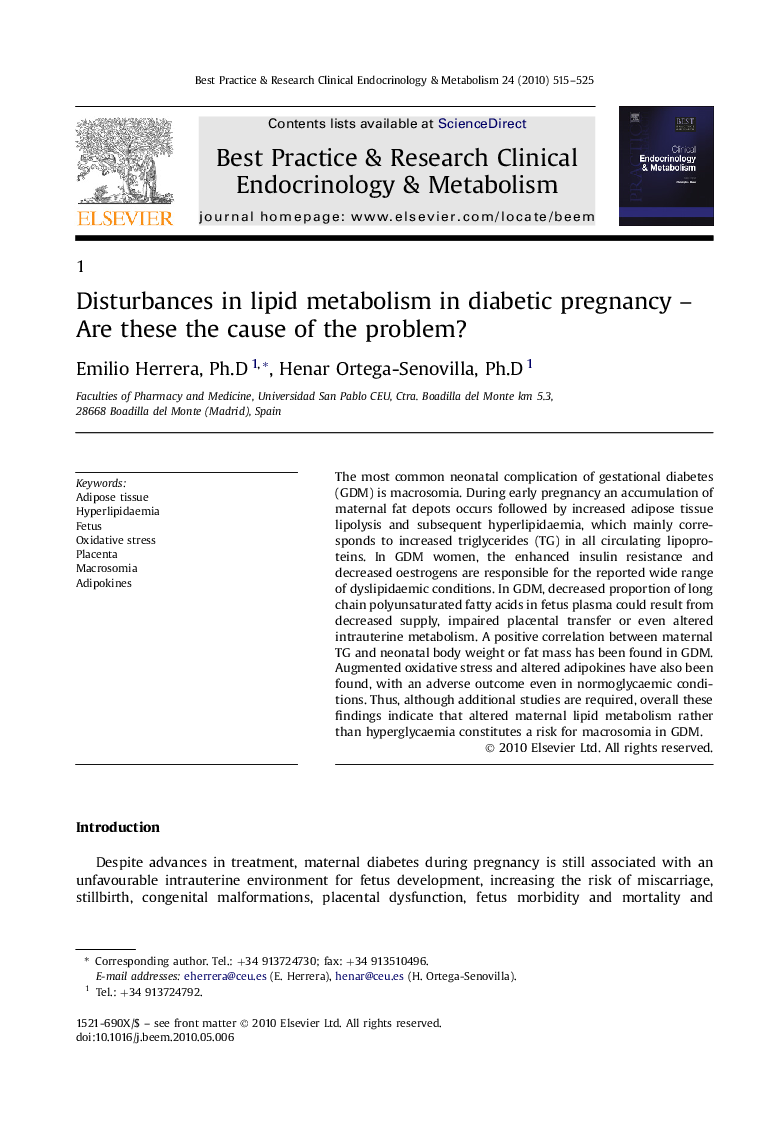| Article ID | Journal | Published Year | Pages | File Type |
|---|---|---|---|---|
| 2792093 | Best Practice & Research Clinical Endocrinology & Metabolism | 2010 | 11 Pages |
The most common neonatal complication of gestational diabetes (GDM) is macrosomia. During early pregnancy an accumulation of maternal fat depots occurs followed by increased adipose tissue lipolysis and subsequent hyperlipidaemia, which mainly corresponds to increased triglycerides (TG) in all circulating lipoproteins. In GDM women, the enhanced insulin resistance and decreased oestrogens are responsible for the reported wide range of dyslipidaemic conditions. In GDM, decreased proportion of long chain polyunsaturated fatty acids in fetus plasma could result from decreased supply, impaired placental transfer or even altered intrauterine metabolism. A positive correlation between maternal TG and neonatal body weight or fat mass has been found in GDM. Augmented oxidative stress and altered adipokines have also been found, with an adverse outcome even in normoglycaemic conditions. Thus, although additional studies are required, overall these findings indicate that altered maternal lipid metabolism rather than hyperglycaemia constitutes a risk for macrosomia in GDM.
